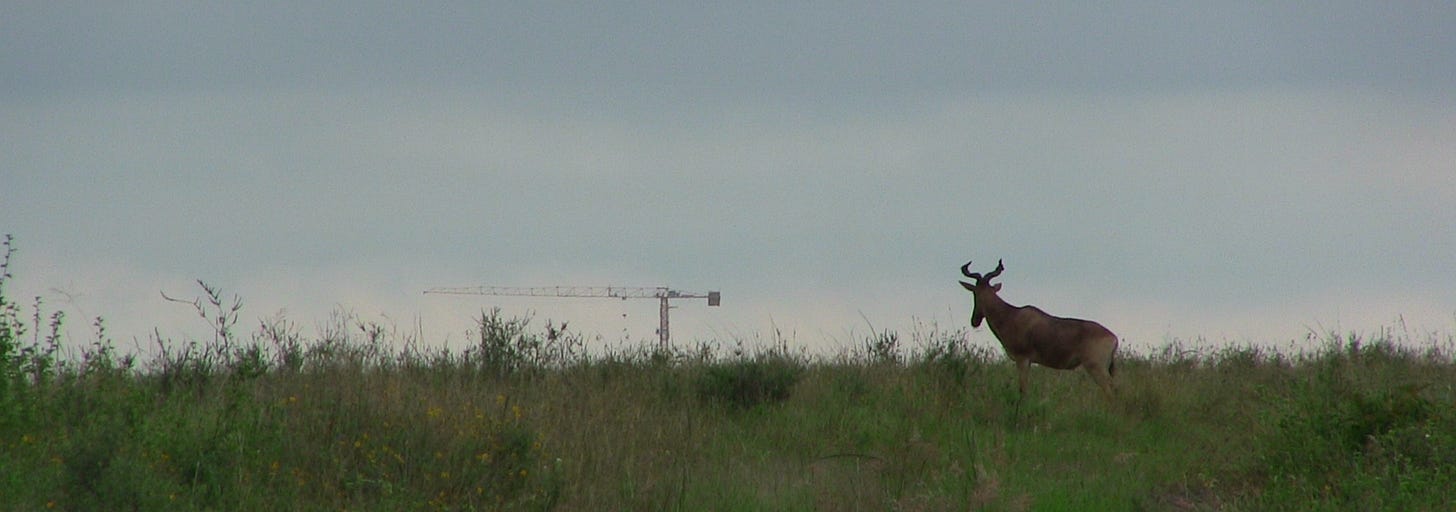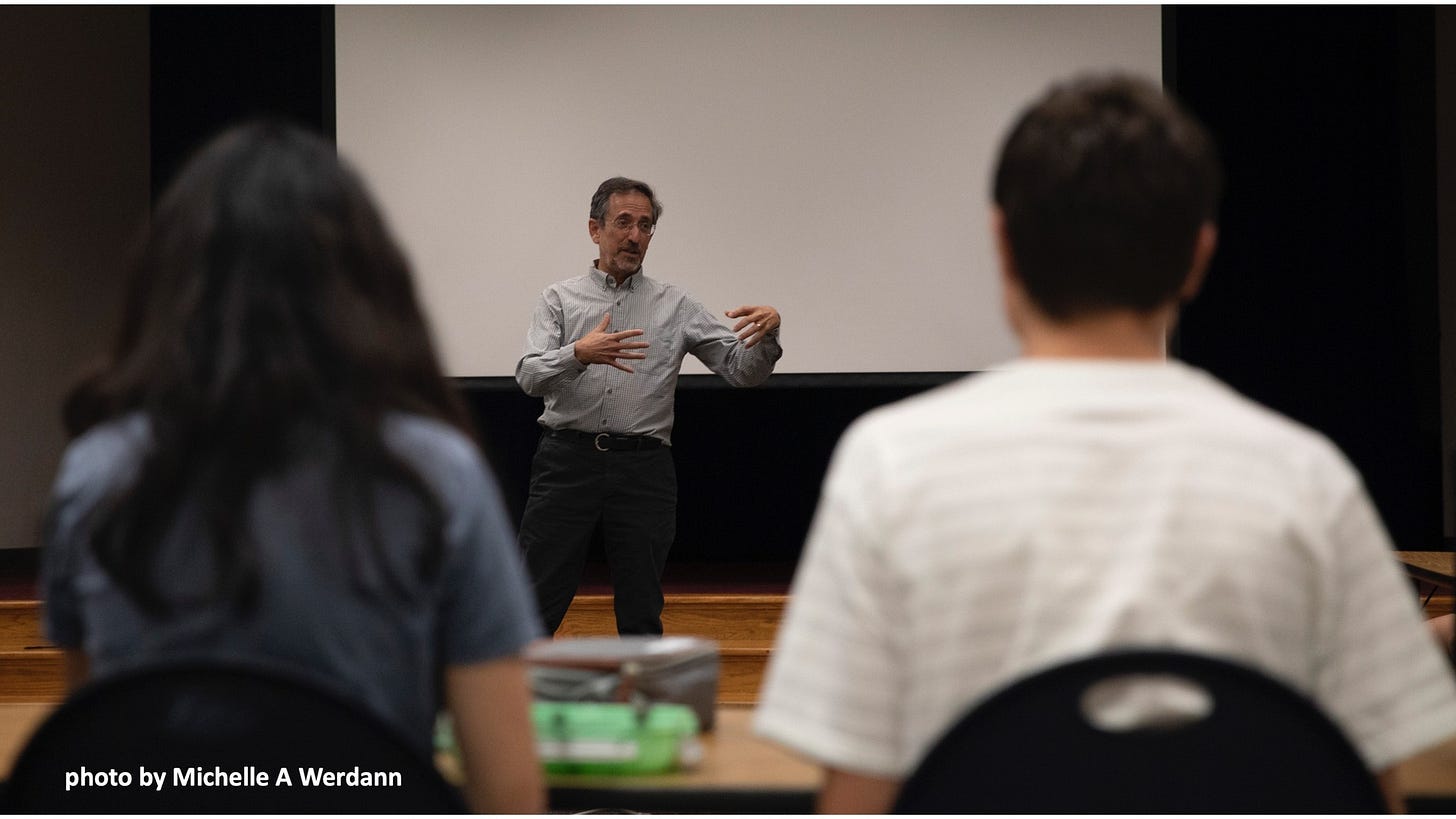My Journey From Platinum Pride to Happily Less-Frequent Flier
Here's why I flew last week after 930 days on the ground, won't be flying as much again, but also won't be flight shamed out of the sky - Part 1
Subscribe to Sustain What here.
Part 1 - the lure of the sky
The British Airways Concorde necktie in the banner image was given to me in the mid 1990s by a brother in law who was traveling back and forth frequently on the supersonic airliner between New York and London working on a huge London real estate deal.
As a young science journalist back then, infected by the technology bug, I admit I was jealous. What power those flights signified!
When supersonic flight ended in 2003, it seemed to me that the human need for speed and convenience had hit an enduring limit. Icarus's fate was avoided. Maybe there were limits to growth.
Now, of course, after a two-decade hiatus, supersonic flight looks poised for a comeback.
We love mobility.
I'm thinking about that Concorde necktie now as the world, and my personal work life, rebound from the pandemic aviation implosion even as people weigh their contributions to climate change driven by our fossil-fuel addiction.
After a 930-day break from boarding airplanes, I flew about 6,000 miles last week, from Bangor, Maine, to New York City to Reno, Nevada, and back. I gave a long-delayed lecture at the University of Nevada, Reno, and did some reporting on issues and options surrounding lithium mining at a scale sufficient to accelerate efforts to electrify transportation. I also marveled at the dusty exodus from Burning Man - with Reno streets looking a bit like a hipster version of The Walking Dead.
To a near-million miler - with nearly all of those miles flown to undertake decades of environmental journalism - that's barely a blip.
But this trip came after a lot of fresh reflection on when I choose to fly or visit virtually, or to focus on chronicling local sustainability efforts. My experiences in Reno reinforced my pre-flight conclusions.
Welcome to my journey from "platinum pride" to being a happy less-frequent flier.
Takeaways
Aviation is a a small driver of climate change, both from heat-trapping gases boosting global warming and direct climatic impacts from contrails. But flying is a very big portion of prosperous peoples' carbon contribution. I won't be flight-shamed out of the sky, but will hesitate much more before booking.
It's important to clarify and cut climate impacts of flying through fuel switching, advancing deployment of short-haul electric aircraft (see Eviation's Alice below), adjusting flight paths and shifting to other forms of transport where possible. The industry has pledged "net zero" emissions by 2050 even as it expands to carry a projected 10 billion passengers a year.
An interconnected planet can be a better planet, and the richest interactions are almost always face to face. Air travel vastly boosts the ease of making such moments (for those who can afford it). But virtual connections can come close, as longtime followers of my Sustain What discussions know.
My approach: Find a balance. There's an enormous amount of progress to be made locally on climate, environmental and energy goals that, when shared and added up, can lead to global progress. And when you fly, make the most of every trip.
Whether you think twice before flying or not, I'd love to hear your reasoning and share your experiences here on Sustain What. Send a note to my Feedback form or post a comment!
Platinum pride
I readily admit to having been seduced, in the past, by the privileged life of a frequent flier that journalists enjoy. My trips were for a mix of reporting, conferences, lectures and, once in awhile, family events and vacations.
Crossing each threshold up the mileage ladder led to more convenience facing the headaches of airport life, even as those headaches mounted with airlines trying ever harder to cut costs.
I got to fly to Seoul in business class on the giant Airbus A360 in 2014 and shot this video, mesmerized by the cameras offering a view straight down and aft.
My flying peaked in 2016, when I went from Platinum to Diamond status on Delta after flights including one to moderate discussions at the United Nations Environment Assembly in Nairobi and another to carry out my duties as an adviser to the Earth Observatory of Singapore, a great center for research and community engagement aimed at understanding and cutting disaster risk across Southeast Asia.
I often post this set of images resulting from visiting two profoundly different spots on those trips, which both happened to be about 85 miles from the Equator - Nairobi's sprawling, trouble-packed informal settlement, Mathare, and Singapore's giant climate-controlled, glass-sheathed Gardens by the Bay botanical attraction (read more):
If I had been based in Singapore or Nairobi, I might not have been inspired to absorb and convey the contrasting realities on the ground that determine environmental risk or resilience - with income being a big one.
Being there, meeting residents, seeing and hearing details others might miss, is essential to a journalist's life.
That rationale for flying doesn't apply to everyone of course.
Make the most of those air miles
I do think one habit of mine related to long-distance travel is worth propagating - making the most of every trip. Get outside your pre-planned itinerary, whether for tourism or business. Use your peripheral vision. Meet and converse with everyday people.
Then amplify what you see and learn in ways that go beyond getting an Instagram ❤️.
While in Nairobi, I could have stuck with interviewing gray-suited diplomats in between U.N. sessions and that would have been job done. But I was compelled to explore, this being my first (and still only) trip to sub-Saharan Africa.
I used Twitter and Facebook to draw attention to the work of James Ekwam, Emmanuel Shaffi, Tony Mwelu and other young photographers I met at a school for photojournalism in Mathare. Their work illustrates how brilliance exists everywhere, just waiting for a little opportunity and guidance. I wish big international media companies would do more to nurture and utilize such home-grown talent. (That's one reason I so appreciate the Global Press model, working to train, support and publish female journalists in some of the world's toughest host spots for risk. Read Filling Global News Gaps from the Ground Up With Female Reporters.)
During my visit I wrote a Dot Earth post on the challenges that emerge where urban sprawl butts up against wildlife conservation - a tough issue all around the world. This photo I shot of an antelope and construction crane taken in Nairobi National Park says heaps.
Most unforgettably, I met and wrote about Shanize Njeri Wanjiku, then a 10-year-old budding poet from Mathare. We met along with her mentor, the arts coach Sejo Jennix, on the periphery of a soccer match held under solar-powered lights. The match was an event staged by the United Nations Environment Program and Philips Lighting but there was nothing staged about Shanize's glow and remarkable poem of unity across Kenya's simmering tribal divides.
Please watch, listen and enjoy, and then recall that the only reason you're connecting with her brilliance is because someone - yours truly - flew to Nairobi and got off the beaten track:
What I learned in Reno
My visit to Reno included several interactions that reinforced the importance of informal face-to-face interaction. It was wonderful to give a lecture - for the first time in two and a half years - to a room of engaged people, 400 learners, young and old. It was a new talk on lessons learned and unlearned in my 35 years on the climate beat. The reception was exhilarating.
But the real magic, as many of you know, came in informal discussions.
One was with a high-energy semi-circle of high school science students who peppered me with brilliant questions about the "filter effect" (is the universe quiet. because intelligence is ultimately self destructive?), how to be an environmental journalist and much more.
Another, over pizza, was with a room full of University of Nevada students who are the first in their families to go to college. The Trio Program supporting them and first-generation college students at five other campuses provides invaluable support, helping expand this country's supply of young doers and leaders from communities that for too long have been sidelined by prejudice and poverty.
One student seemed intrigued by the concept of ecological economics. I just sent him the video conversation I did early in the pandemic with one of the pioneers in that field, Herman Daly, and a leading young scholar, Kate Raworth.
Our conversations could not be replicated with a computer or phone screen in the way. But these initial meetups can be sustained online I plan to reconnect from a distance.
That's the hybrid path that makes sense to me.
Here's a parting example of the good - the astonishing and humbling one-planet, one-atmosphere view flying affords us.
Part 2 - As Flying Rebounds, Here's the Plane-Free Case for Making a Difference Close to Home and Online
~ ~ ~
Send feedback (including concerns or corrections!), tips, ideas here.
Find my social media accounts, books and music in a single click here.














